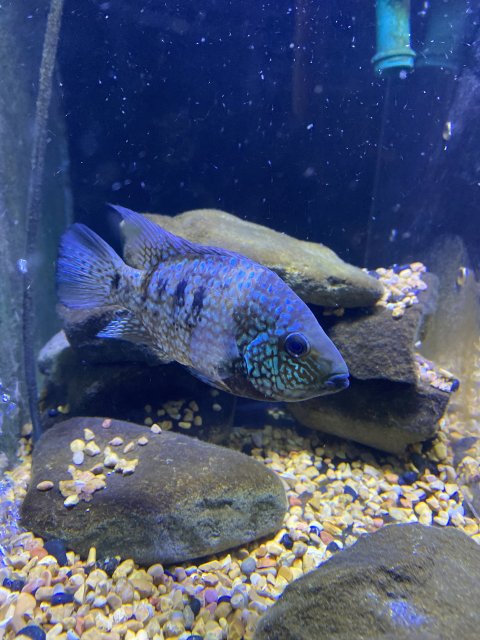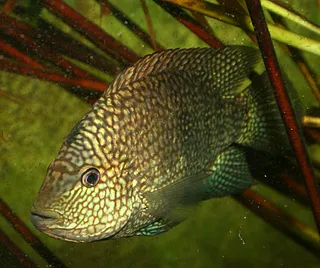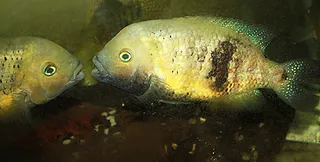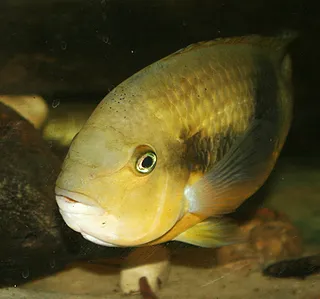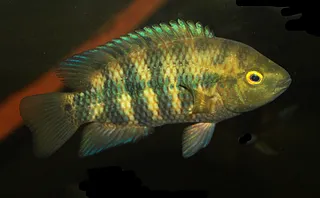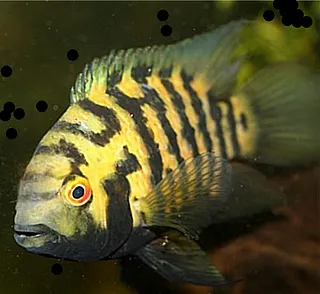Normally, during breeding or territorial disputes, Carpintis split their body colors with their face turning white and the back half of their body turns black. This 3.0-3.5 inch has those colors inverted. Front black and back white. Anyone ever experience one of their cichlids do anything like this??